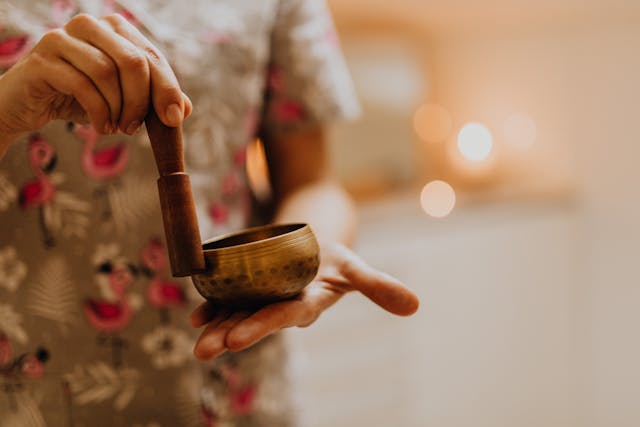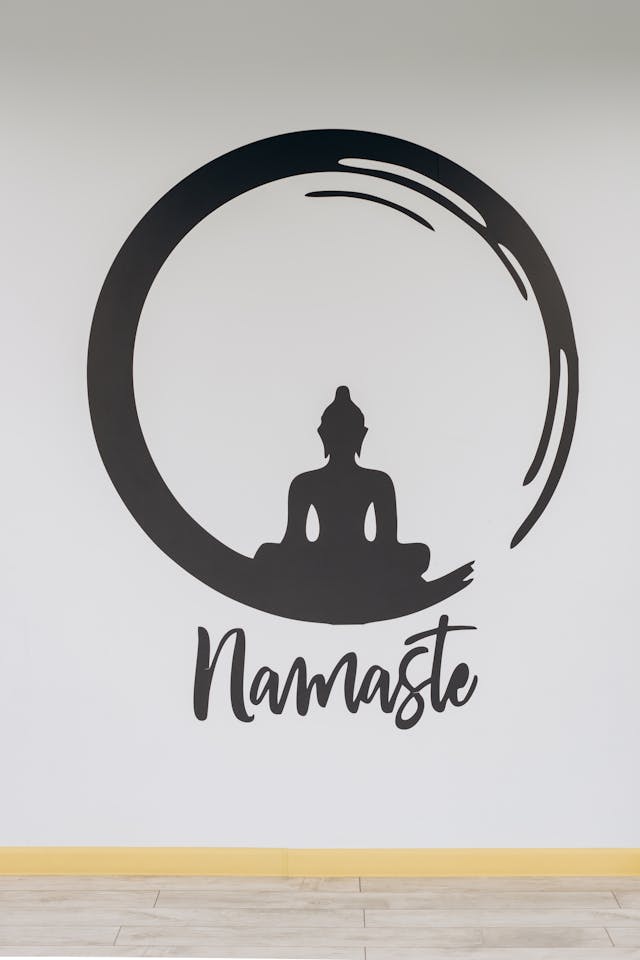My interpretation of the Hindu greeting Namaste – “the peace within my soul recognizes the peace within yours.”
Chakras, the energy centers within our bodies, are fundamental to our physical, emotional, and spiritual well-being. When these chakras are open and balanced, we experience harmony and vitality in all aspects of our lives. However, many of us face blockages or imbalances that can disrupt this flow of energy, leading to various forms of discomfort or distress. By understanding the importance of chakras and adopting practices to maintain their balance, we can significantly enhance our overall quality of life.
Read Chakras – Beginners Guide Part 1 by clicking on the link – Chakras Part 1
Understanding Chakras
Chakras are spinning wheels of energy located along the spine, from the base to the crown of the head. There are seven primary chakras, each associated with specific physical, emotional, and spiritual attributes. The Root Chakra (Muladhara) at the base of the spine governs our sense of security and grounding. The Sacral Chakra (Svadhisthana) just below the navel is linked to creativity and sexual energy. The Solar Plexus Chakra (Manipura) in the upper abdomen is the center of personal power and confidence. The Heart Chakra (Anahata) at the center of the chest deals with love and compassion. The Throat Chakra (Vishuddha) governs communication. The Third Eye Chakra (Ajna) between the eyebrows is associated with intuition and insight. Finally, the Crown Chakra (Sahasrara) at the top of the head is our connection to higher consciousness and spiritual awareness.
Signs of Imbalance
An imbalanced chakra can manifest in various ways, both physically and emotionally. For example, an overactive Root Chakra may lead to feelings of anxiety and restlessness, while an underactive one might cause insecurity and fatigue. A blocked Sacral Chakra can result in a lack of creativity or sexual dysfunction, whereas an overactive one might lead to obsessive behavior. Similarly, a disrupted Solar Plexus Chakra might cause low self-esteem or difficulty in asserting oneself. Physical ailments, such as digestive issues, can also be a sign of imbalance in this chakra.
When the Heart Chakra is not in harmony, we might struggle with relationships or feel a profound sense of loneliness and isolation. Throat Chakra imbalances can lead to difficulties in communication, such as being overly talkative or, conversely, feeling unable to express oneself. An imbalanced Third Eye Chakra might result in a lack of intuition or insight, while an overactive one could lead to delusional thinking. Finally, a blocked Crown Chakra can manifest as a lack of purpose or spiritual disconnect, whereas an overactive one might result in feeling ungrounded.

Practices for Aligning and Maintaining Open Chakras
Meditation and Mindfulness
Meditation is one of the most effective ways to balance and align chakras. By focusing on each chakra individually during meditation, you can visualize the energy flowing freely and harmoniously. Guided meditations that focus on chakra alignment can be particularly helpful. Mindfulness practices, such as deep breathing and body scans, can also promote awareness of where blockages might exist and facilitate their release.
Yoga
Yoga, with its various poses and movements, can help to stimulate and balance the chakras. For example, grounding poses like Tree Pose (Vrksasana) and Warrior Pose (Virabhadrasana) are beneficial for the Root Chakra. Hip-opening poses as Pigeon Pose (Eka Pada Rajakapotasana) can aid in balancing the Sacral Chakra. Core-strengthening poses such as Boat Pose (Navasana) are excellent for the Solar Plexus Chakra. Heart-opening poses like Camel Pose (Ustrasana) can help with the Heart Chakra while throat-opening poses like Fish Pose (Matsyasana) are good for the Throat Chakra. For the Third Eye Chakra, poses that stimulate the forehead, such as Child’s Pose (Balasana) with the forehead touching the ground, can be beneficial. Finally, inversions like Headstand (Sirsasana) or meditation in Lotus Pose (Padmasana) can help to balance the Crown Chakra.

Diet and Nutrition
The foods we consume can also influence the balance of our chakras. Eating red foods like tomatoes and strawberries can support the Root Chakra, while orange foods like carrots and oranges can benefit the Sacral Chakra. Yellow foods such as bananas and corn can help the Solar Plexus Chakra. Green leafy vegetables are excellent for the Heart Chakra, while blueberries and other blue foods can support the Throat Chakra. For the Third Eye Chakra, foods like purple grapes and eggplant are beneficial. The Crown Chakra is often associated with light and fasting, suggesting that a balanced approach to diet, including periodic fasting, can be helpful.
Crystals and Gemstones
Crystals and gemstones have been used for centuries to heal and balance the chakras. Each chakra is associated with specific stones. For example, red jasper and hematite are grounding stones for the Root Chakra. Carnelian and orange calcite are linked to the Sacral Chakra. Citrine and amber can aid the Solar Plexus Chakra. Rose quartz and green aventurine are beneficial for the Heart Chakra. For the Throat Chakra, blue stones like turquoise and lapis lazuli are helpful. Amethyst and clear quartz are excellent for the Third Eye Chakra. Finally, selenite and clear quartz are associated with the Crown Chakra.

Aromatherapy
Essential oils can also play a significant role in balancing chakras. Using essential oils like patchouli and cedarwood can help ground the Root Chakra. Sweet orange and ylang-ylang are beneficial for the Sacral Chakra. Lemon and peppermint can stimulate the Solar Plexus Chakra. Rose and lavender are great for the Heart Chakra. For the Throat Chakra, chamomile and eucalyptus are useful. Sandalwood and frankincense can aid the Third Eye Chakra, while myrrh and lotus are excellent for the Crown Chakra.
Sound Healing
Sound vibrations can profoundly impact our chakras. Each chakra has a corresponding frequency, and using sound healing techniques like chanting, singing bowls, or tuning forks can help align and balance these energy centers. The root sound “LAM” corresponds to the Root Chakra, “VAM” to the Sacral Chakra, “RAM” to the Solar Plexus Chakra, “YAM” to the Heart Chakra, “HAM” to the Throat Chakra, “OM” to the Third Eye Chakra, and “AH” to the Crown Chakra. Listening to or chanting these sounds can facilitate chakra alignment.

Maintaining Chakra Balance
Regular Practice
Maintaining balanced chakras requires regular practice and attention. Incorporating meditation, yoga, mindful eating, and other holistic practices into your daily routine can help keep your chakras aligned. Setting aside time each day to focus on your energy centers can create a lasting sense of harmony and well-being.
Self-Reflection
Regular self-reflection can help you stay attuned to your chakras and identify any imbalances early on. Journaling about your feelings, physical sensations, and experiences can provide insights into which chakras might need attention. By being proactive, you can address potential blockages before they become significant issues.
Professional Guidance
Sometimes, professional guidance can be beneficial in maintaining chakra balance. Reiki practitioners, energy healers, and holistic therapists can offer valuable insights and techniques for aligning your chakras. Regular sessions with a professional can complement your personal practices and help you achieve deeper healing.
The Benefits of Balanced Chakras
The benefits of maintaining open and balanced chakras are profound. When your chakras are aligned, you may experience increased energy, improved mental clarity, emotional stability, and a deeper connection to your spiritual self. Physical health can also improve, as balanced chakras contribute to the harmonious functioning of the body’s systems.
For instance, balanced Root and Sacral Chakras can lead to a strong sense of security and creativity, allowing you to navigate life with confidence and joy. A harmonious Solar Plexus Chakra can boost your self-esteem and empower you to pursue your goals. When the Heart Chakra is open, you can experience deeper, more fulfilling relationships. A balanced Throat Chakra enables clear and effective communication, while an aligned Third Eye Chakra enhances intuition and insight. Finally, a balanced Crown Chakra fosters a sense of purpose and spiritual connectedness, leading to a more profound sense of fulfillment.
Conclusion
Aligning and maintaining open and balanced chakras is a journey that requires dedication, self-awareness, and a holistic approach. By incorporating practices such as meditation, yoga, mindful eating, and using tools like crystals, essential oils, and sound healing, you can create a balanced and harmonious energy flow within your body. Regular self-reflection and, if necessary, seeking professional guidance can further enhance your ability to keep your chakras aligned.
The journey towards balanced chakras is not just about physical well-being but also about nurturing your emotional and spiritual health. As you embark on this path, you’ll likely find yourself becoming more in tune with your inner self and the world around you. The benefits of this journey are far-reaching, leading to a more vibrant, fulfilling, and harmonious life. Embrace the process with an open heart and mind, and you’ll discover the profound impact that balanced chakras can have on your overall well-being.
Love Life x
References:
- Chopra, D. (2010). The Book of Secrets: Unlocking the Hidden Dimensions of Your Life. Three Rivers Press.
- Judith, A. (2004). Wheels of Life: A User’s Guide to the Chakra System. Llewellyn Publications.
- Iyengar, B.K.S. (1979). Light on Yoga. Schocken Books.
- Shalila, S., & Taub, B. (1989). The Complete Book of Chakra Healing. Lotus Press.
- Stein, D.J. (2009). Essential Reiki: A Complete Guide to an Ancient Healing Art. Crossing Press.
- Simmons, R., & Ahsian, N. (2005). The Book of Stones: Who They Are and What They Teach. North Atlantic Books.
- Brown, B. (2010). The Gifts of Imperfection: Let Go of Who You Think You’re Supposed to Be and Embrace Who You Are. Hazelden Publishing.

